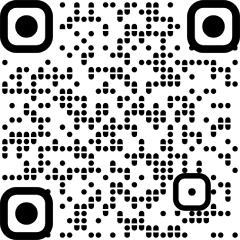Why you pay 2 to 5 times the wholesale price
With over 5,000 devices estimated to be used in healthcare, even if a few hundred are identified as essential and commonly used, health activists point out that taking up one device at a time for price control would be a process lasting centuries. NEW DELHI: Even if the central government and the National Pharmaceutical Pricing Authority were to control prices of all the medical devices recommended by the state drug authorities of Maharashtra and Odisha, it would barely cover 15% of India's medical device market estimated to be worth approximately Rs 25,000 crore in 2015 and projected to double by 2020.
NEW DELHI: Even if the central government and the National Pharmaceutical Pricing Authority were to control prices of all the medical devices recommended by the state drug authorities of Maharashtra and Odisha, it would barely cover 15% of India's medical device market estimated to be worth approximately Rs 25,000 crore in 2015 and projected to double by 2020.The devices recommended for price control fall into two categories -consumables, which includes syringes, cath eters, sutures and face masks; and patient aids, which includes stents, orthopaedic implants, pacemakers and so on.
There is no price control on a single item in the category of diagnostic imaging, which includes CT scans, MRI and X-ray , constituting 30% of the devices market and the broad category of `others', which includes ECG machines, dialysis machines, endoscopes and laparoscopes, constituting another 24%. Dental products, constituting 3% of the market, too figure nowhere.The bulk of the category of IV diagnostics, which includes lab reagents and accessories, constituting 10%, is also out of any sort of monitoring.
With over 5,000 devices estimated to be used in healthcare, even if a few hundred are identified as essential and commonly used, health activists point out that taking up one device at a time for price control would be a process lasting centuries. Yet, the government is taking up one or two devices at a time while patients are exploited every day, they observed. The process of capping the price of stents alone took almost four years.
The items under the consumables category investigated by the Maharashtra and Odisha drug authorities reveal that on everything counting as a medical device, from the smallest and the most commonly used devices like facemasks and syringes to more expensive ones like catheters used in angioplasty , the profits hospitals make by overcharging patients are typically around 150% to 250%. In one case, the maximum retail price was as much as ten times the cost to the wholesaler.
Considering the huge margins and rampant overcharging made possible by the very high MRPs, capping of prices could result in at least a halving of the expenditure on these devices. Capping of stent prices had resulted in prices being slashed by over 75%.
The disposable syringes market is estimated to be about Rs 1,800 crore. This estimate is based on retail sales or the MRP, which, as the investigation revealed, is on average 250% more than the price to the wholesaler.Thus a price cap that would prevent the profiteering happening in hospitals could halve spending on just one item, disposable syringes, achieving a saving of Rs 900 crore for patients.
“Hospitals provide services.They should be charging for their services. Why are they loading their running costs onto the devices? They should not be allowed to extract such huge margins,“ said a device maker. However, public health activists pointed out that the device companies were also party to this looting as they enabled it by printing very high MRPs as part of their marketing to hospitals, the biggest buyers of devices.


Comments
All Comments
By commenting, you agree to the Prohibited Content Policy
PostBy commenting, you agree to the Prohibited Content Policy
PostFind this Comment Offensive?
Choose your reason below and click on the submit button. This will alert our moderators to take actions